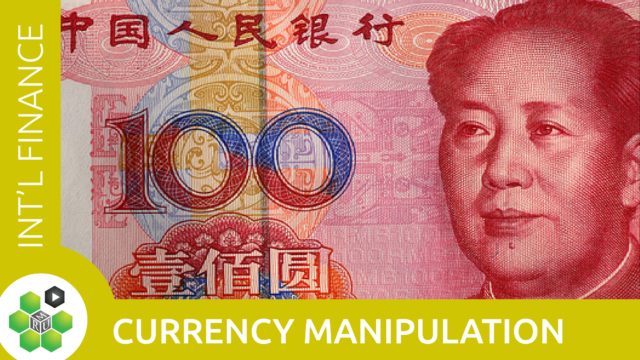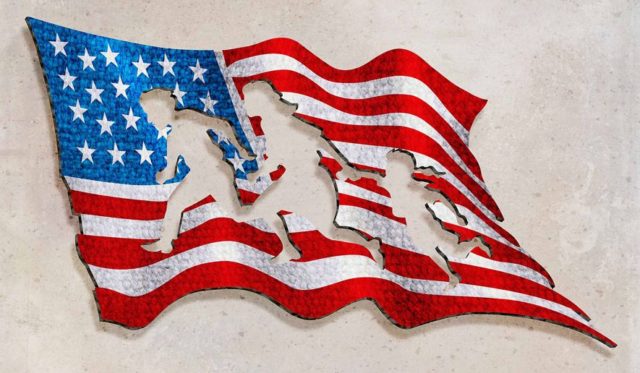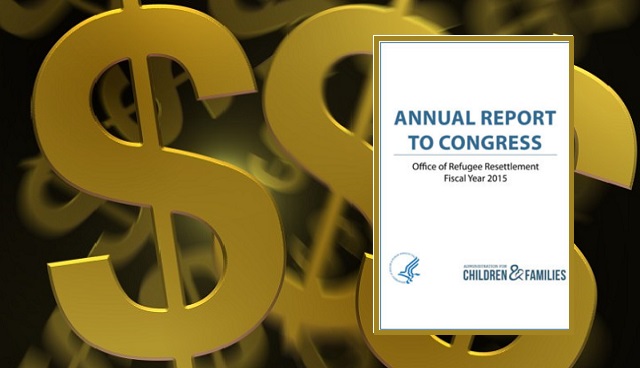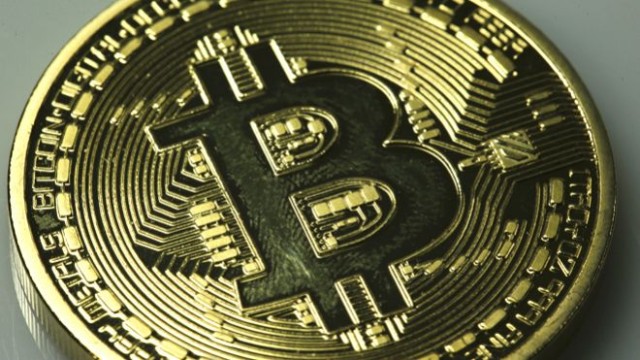Dear China: Thank You for Manipulating Your Currency by Mark J. Perry
fRom a Wall Street Journal article earlier this week “U.S. Eyes New Tactic to Press China“:
The White House is exploring a new tactic to discourage China from undervaluing its currency to boost exports, part of an evolving Trump administration strategy to challenge the practices of the U.S.’s largest trading partner while stepping back from direct confrontation.
Under the plan, the commerce secretary would designate the practice of currency manipulation as an unfair subsidy when employed by any country, instead of singling out China, said people briefed on or involved in formulating the policy. U.S. companies would then be in a position to bring antisubsidy actions themselves to the U.S. Commerce Department against China or other countries.
Don Boudreaux responds on Cafe Hayek “The Bizarro World of Mercantilism” (my emphasis):
To the extent that currency manipulation is real and works as advertised, it makes the exports of countries that practice it artificially inexpensive for foreigners to buy. That is, currency manipulation transfers wealth from the citizens of countries that practice it to the citizens of countries fortunate enough to buy the manipulators’ subsidized exports.
And yet it is the governments whose citizens are on the receiving end of these transfers who fussily try to prevent these transfers, while the governments whose citizens are taxed to fund the transfers stubbornly carry on with them. So with the Trump administration threatening to stop Beijing’s alleged currency manipulation, and Beijing resisting, it’s as if the Trump administration believes itself to be charged with the responsibility of protecting the welfare of the Chinese people at the expense of American citizens, while the government in Beijing plays the role of benefactor of the American people at the expense of Chinese citizens.
Mercantilist myths about trade truly do incite governments to do the darndest things!
To that, Don adds:
Nearly every tenet of mercantilism is backwards. Those who fall for this sham mistake benefits for costs and costs for benefits; they interpret wealth destruction as wealth creation and wealth creation as wealth destruction. If they were a school of mathematics, mercantilists would insist that 2 + 2 = -4, 100 x 20 = 5, and 2 < 1.
MP: I would add that those who fall for the mercantilist sham also mistakenly interpret the destruction of jobs as job creation. This is a very important point that Don makes — Trump’s mercantilism and protectionism aren’t just misguided and maybe slightly off-base and erroneous, they are actually completely wrong, upside-down and backwards.
And to Don’s assessment of currency manipulation, I’ll add some updated comments below based on my 2011 article in The American “Why We Should Thank the Chinese Currency Manipulators“:
The “manipulation” of China’s currency is actually to the distinct economic advantage of millions of American consumers and thousands of U.S. businesses buying products made in China, and benefits the U.S. economy overall. Let me explain:
In the best of all possible worlds for the United States, China would use its labor, capital and resources to manufacture consumer goods like clothing, footwear, furniture, electronics, toys and appliances and send $250 billion worth of those products to U.S. consumers for free every year as a gift or as a form of foreign aid to the American people. In addition, the Chinese would produce and send to America another $250 billion worth of capital goods, raw materials, parts, industrial supplies and materials, automotive parts, machinery, and natural resources at no charge, as a gift to American manufacturers and other businesses every year. (Note: That’s roughly the dollar amount of goods the U.S. purchased from China last year.)Can there really be any argument that such an arrangement, where America would receive $500 billion worth of free goods every year from China, would be to the indisputable economic advantage of the United States? Unfortunately, that extreme form of Chinese generosity is not realistic, so here’s a possible second-best outcome:
Instead of sending us $500 billion worth of goods annually for free, China offers an attractive alternative. It agrees to send us $625 billion worth of consumer and industrial goods every year, but agrees to sell us those manufactured goods at a substantial 20% discount for only $500 billion. In that case, the amount of foreign aid will be less than the $500 billion in the first example, but will still be significant—a $125 billion gift every year from the Chinese people to the American people.
How will China generate this $125 billion in annual foreign aid to the United States? One way is to keep its currency undervalued to bring about the 20% discount on its products coming to America. Which then raises the question: If China is willing to undervalue its currency, and in the process provide approximately $125 billion of foreign aid annually to American consumers and businesses, what’s the problem? Why should we complain?
And that is my main point: that the “manipulation” of China’s currency is actually to the distinct advantage of millions of American consumers (especially low-income Americans) and U.S. businesses buying products and inputs made in China. Those two groups certainly aren’t complaining about low-priced Chinese products, and in fact would be made worse off if China were forced to revalue its currency and in the process make its products more expensive for Americans.
So when you hear China’s alleged currency manipulation discussed in the media and by Donald Trump, keep the following in mind:
- China’s currency manipulation is a form of foreign aid, and to the direct advantage of millions of U.S. consumers, especially low-income groups, and to the direct advantage of thousands of American companies buying inputs from China.
- Forcing China to revalue its currency would benefit some American manufacturers competing with China, but would significantly harm those American consumers and businesses currently buying undervalued imports. On net, there would be more harm to American consumers than benefits to American manufacturers, which would reduce our overall standard of living.
- Like other forms of mercantilism and protectionism, forcing or pressuring China to appreciate its currency would favor certain domestic producers over millions of consumers and import-buying companies, but would make the U.S. worse off, not better off.
- Finally, instead of complaining, we should be thankful for China’s foreign aid to Americans through an undervalued yuan and overvalued dollar, and for the undervalued goods that collectively save American consumers and companies billions of dollars every year.
Bottom Line: If you wouldn’t object to China sending products to the United States for free, then on what basis would you object to currency “manipulation” that allows you and millions of fellow Americans to purchase undervalued Chinese imports at a huge discount? To complain about China’s low prices from currency manipulation would be like complaining that Walmart’s “Everyday Low Prices” are a form of “price manipulation,” even though those “manipulated” prices save Americans billions of dollars annually. Pressuring China to stop its alleged currency manipulation would be to force it to raise prices on everything we buy from them, and somehow thinking that those higher prices make us better off. That would be like forcing Walmart to stop “Everyday Low Prices” and instead charge “Everyday High Prices” and then thinking that American consumers are somehow better off.
In the upside-down “bizarro world of mercantilism” here’s how Trump’s new trade policy will apparently work: China and some other countries allegedly keep their currencies undervalued to the distinct advantage of Americans, who are enriched and made better off by low prices, and to the distinct disadvantage of the Chinese people and other foreigners, who are impoverished and made worse off. To retaliate against that “unfair” outcome, Donald Trump proposes to enact protectionist, mercantilist trade policies to correct that “unfairness.” But those mercantilist policies are actually guaranteed to impoverish America and make Americans worse off. So the faulty “logic” of trade retaliation is: If China and other countries impoverish their people with currency manipulation, we’ll retaliate by impoverishing our people with protectionism. “Fairness” might be achieved by this mercantilist-driven trade policy, but only in the sense that the people of all affected countries are made equally worse off.
Mercantilism isn’t only bizarre, it’s a guaranteed formula for economic ruin. And that’s why it was discredited by the mid-18th century when it was “eclipsed by the theory of comparative advantage and the associated benefits of free trade developed by David Ricardo,” according to the Princeton Encyclopedia of the World Economy. And that’s why “Britain abandoned mercantilism and its associated trade restrictions in the 1840s” and was no longer taken seriously by economists. Unfortunately, in the world of modern U.S. politics, the sham of mercantilism is still being taken seriously by politicians almost 200 years after it was discredited.
Republished from AEI.

Mark J. Perry
Mark J. Perry is a scholar at the American Enterprise Institute and a professor of economics and finance at the University of Michigan’s Flint campus.


































